Join us for a trip around some of the best Italian beaches, from the impossibly iconic to some that are right off the beaten track. Which is your favourite?
Photos by Getty Images
Though Italy attracts visitors throughout the year, many of us also like to spend summer holidays there, enjoying the country’s coastline and multitude of Blue Flag beaches.
Resorts, of course, go in and out of fashion, and in the end it all comes down to personal taste. If you crave solitude, the large-scale beaches around Rimini with their serried ranks of ombrelloni (parasols) are not for you; maybe Cala Gonone in Sardinia would suit you better, as it is only accessible by boat or narrow road…
Our carefully curated selection of ten iconic Italian beaches starts in the northwest and works slowly southwards – you’re sure to find at least one that suits you perfectly. Enjoy!
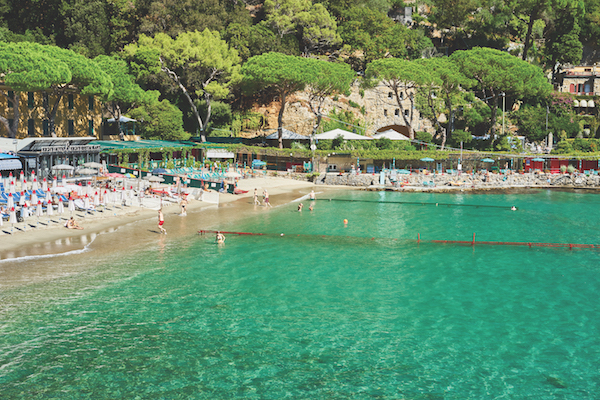
1 Paraggi, Portofino – Liguria
Portofino is a famously charming fishing village sat on a promontory to the southeast of Genoa, the quintessential dream destination for a holiday in Italy. Many visitors content themselves with a seat on a terrace at one of the many bars along the harbourside, where they can enjoy the views of boats bobbing in the sea, but the more adventurous will take the pretty walk to Paraggi, a little cove three kilometres north of Portofino, which has the area’s only sandy beach.
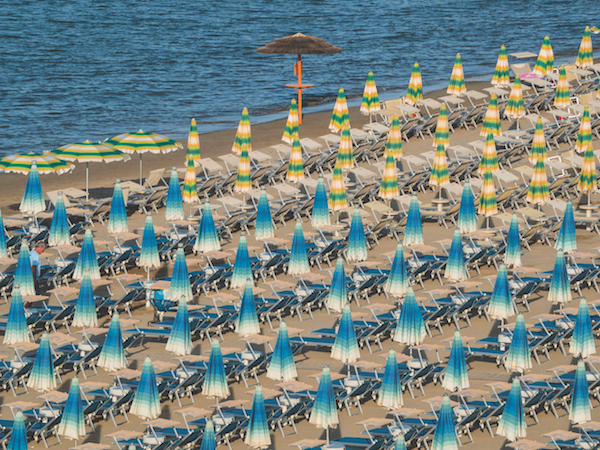
2 Gatteo a Mare – Emilia-Romagna
This little town just to the north of the perennially popular resort of Rimini (supposedly where the Rubicon river used to run) has 753 metres of traditional Italian beach with all the umbrellas you could ever want. There are beach activities for children, and music and dancing in the car-free streets and piazzas at night. In July, the ‘Settimana della Micizia’ celebrates the animal that is the symbol and the soul of Gatteo a Mare: the humble cat.
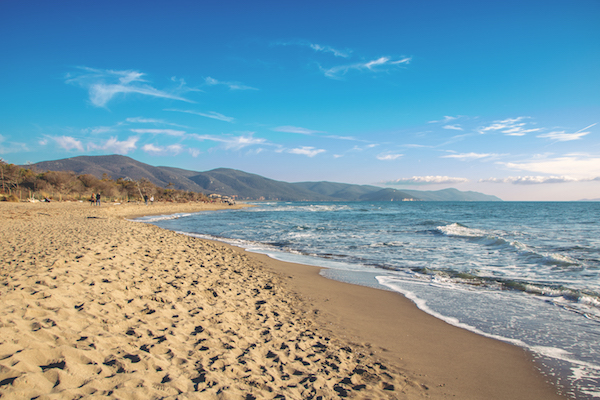
Marina di Alberese – Tuscany
About 20km south of Castiglione della Pescaia, which is perhaps the most famous resort on the Maremma coast, the sandy beaches and shallow waters of Marina di Alberese are popular with holidaying Romans and Florentines, and have been ever since the days of the Romans – and even the Etruscans. When you want to take a break from the beach, the old town is very pretty, while inland is the Parco Naturale dell’Uccellina. Here you can ramble along well-signposted footpaths over hills covered in macchia – the characteristic Mediterranean scrub growth of rosemary, broom, rockrose, sea lavender and rowan trees. The area is also home to the famous Maremma cattle, instantly recognisable by their white and wonderfully elegant long, wavy horns.
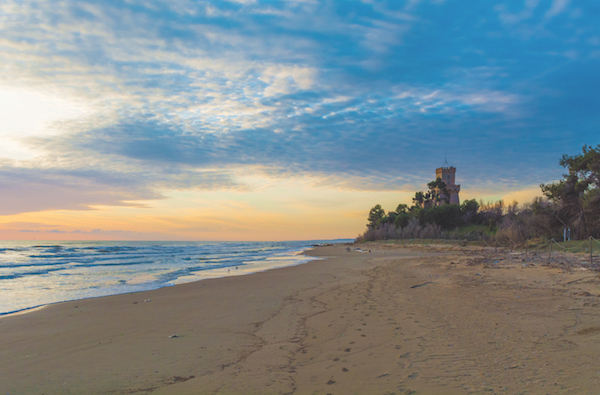
Pineto – Abruzzo
The typical Italian resort of Pineto, north of Pescara, has a 40-mile-long sandy beach lined by a strip of sand pines that give the town its name – and shade when the midday sun gets too hot. There are plenty of restaurants and nightclubs to choose from, and your choice of campsites and hotels for accommodation. Try the three-star Hotel Abruzzo on the seafront, which has its own private beach, restaurant and parking.
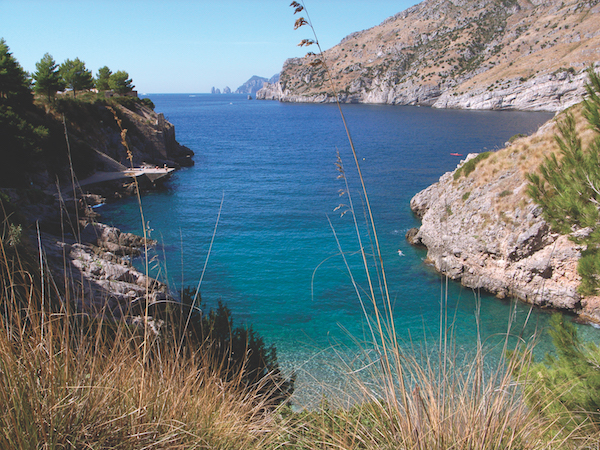
Baia di Ieranto – Campania
Though the Amalfi Coast is justifiably famous throughout the world for its wonderfully picturesque towns like Positano and Amalfi, its tiny blue coves and its groves of lemon trees, it actually has very few beaches. Baia di Ieranto is a beautiful, untouched sandy bay just beyond the most southerly point of the Bay of Naples. It is accessible only by boat from Marina di Cantone, or by a well-marked footpath starting from the church in Nerano. The Nettuno Diving Centre in Cantone will take you out to explore the Punta Campanella marine reserve offshore.

Cala Gonone – Sardinia
Once only accessible by boat, Cala Gonone, which lies at the bottom of 900-metre-high cliffs, now has a tortuous winding road leading to it. There are boat trips from the little port. Take one to the Grotta del Bue Marino (the Cave of the Sea Ox, more commonly known as the Mediterranean monk seal). Even if the seals prove elusive, the caves themselves are a delight, filled with light reflected from the white sand under the water and decorated with stalactites and stalagmites. Boat trips also go to Cala Luna, a perfect beach of yet more white sand backed by cliffs, though what makes it really special are the blooming pink, white and red oleanders you will see along the way.
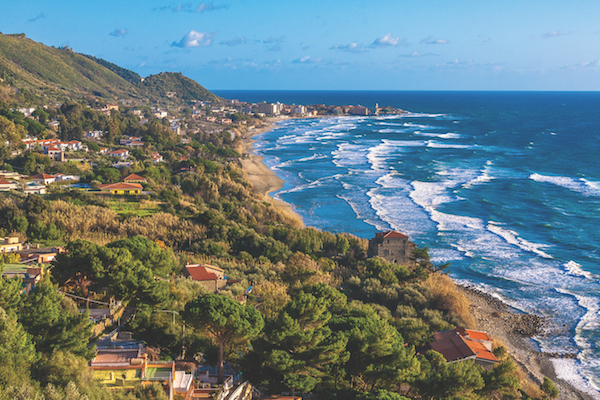
Pollica, Acciaroli and Pioppi – Campania
These beaches are all south of Eboli (where Carlo Levi wrote his famous book Christ Stopped at Eboli) on the Cilento Coast. They are also south of Paestum, which has the only well-preserved Greek temples in mainland Italy. This whole coastline was uninhabited for centuries because malaria mosquitoes infested it, but those days are long gone and it now has several resorts, used mostly by Italians. La Spiaggia Grande at Acciaroli (pictured) has pristine Blue Flag waters and plenty of space.
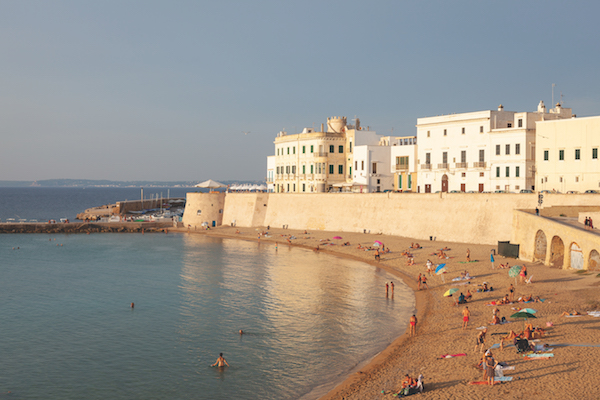
Gallipoli – Puglia
Gallipoli, in the Salento region of Puglia, is an ancient fishing village of winding streets and white-washed houses on a little promontory reached by a bridge. The beach arches around the bay below the town looking out to the calm Gulf of Taranto. The long sandy shores of Baia Verde are just to the south of Gallipoli and have been dubbed the ‘capital of the Italian summer beach scene’. This stretch can get busy in peak season and has a lively nightlife for bright young things.
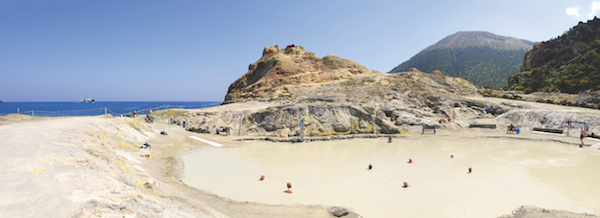
Porto di Ponente – Aeolian Islands
If you want to bathe in a pool of volcanic mud, this spot on the Aeolian Islands, just off Sicily, is the place. People scoop out the mud and plaster it onto their bodies to dry in the sun, then they wash it off in the sea. They swear that this is not only good for their health, but that it also leaves their skin feel incredibly soft and smooth. (Please note, this is not recommended for children or pregnant women.) Overhead, the volcano smokes threateningly, but it hasn’t erupted for more than 100 years. On the beach is fine black sand of volcanic lava leading to crystal-clear water made slightly fizzy by the rising volcanic gasses. To get there, take a ferry from Milazzo.
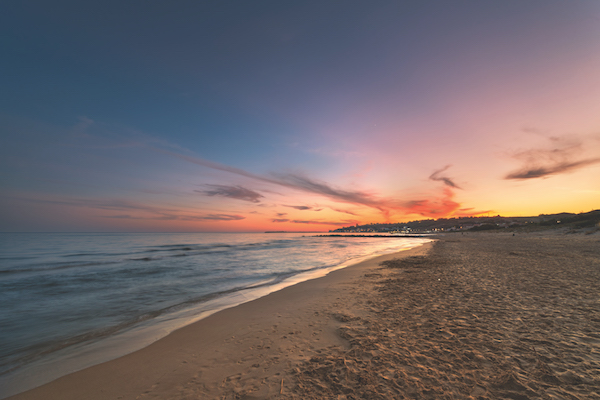
Porto Palo – Sicily
The town of Menfi in southwest Sicily was virtually destroyed by the 1968 earthquake – and is only partially rebuilt now. If you head 3km down the road from here you get to Porto Palo, which boasts mile after mile of pristine white sands. No regimented umbrellas here, only a few restaurants on the beach serving the freshest fish and, of course, Sicilian ice cream.
You’ll find more inspiration for travelling to fantastic Italian beaches here
